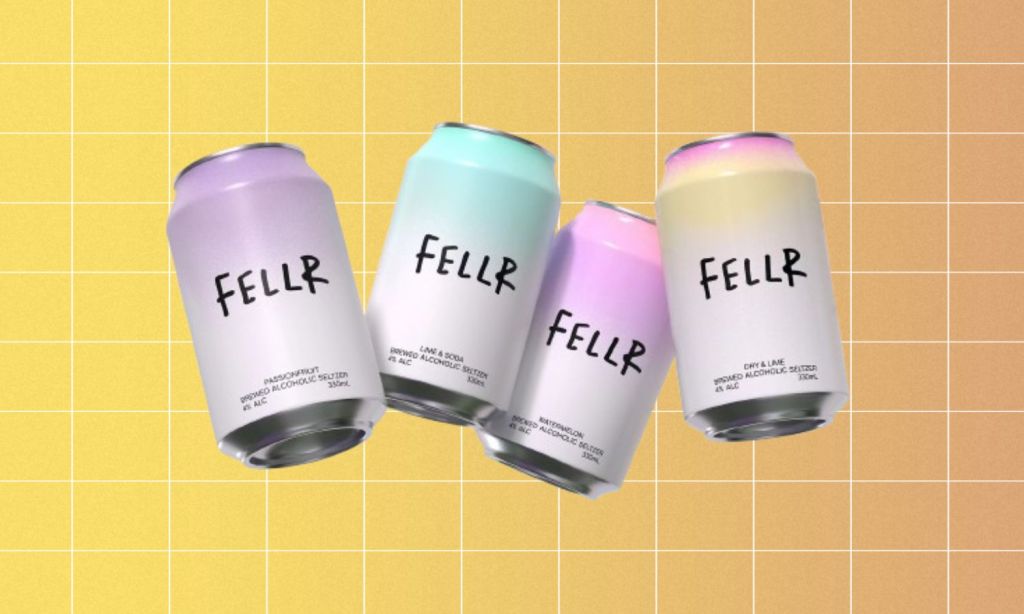Every drinks expert I spoke to agreed: the last decade has been transformative for the RTD (short for ‘ready-to-drink’) category. Even I have a hard time letting go of associating RTDs purely as UDLs or vodka cruisers, usually favoured by teenagers. But for anyone bypassing them for that reason, you might be missing out.
“Initially viewed as sugary and low-quality, RTDs have evolved into a diverse segment that appeals to a broader audience,” says Adam Macpherson, country manager for drinks umbrella brand Phusion Projects. “This shift has been driven by a focus on premium ingredients, innovative flavours and the growth in white RTD.”
The headline of a recent article summarises the shift best: “RTDs: Growing up, not slowing down”.
The Evolution of the RTD
Tim Carroll, director of merchandise and buying at Endeavour Group, mentions that consumers favour lighter, more refreshing beverages, with lemon emerging as a dominant flavour, which is another reason behind the growth.
“This has spurred exciting innovation from our suppliers within the premix space over the last year,” Carroll says. “The adaptability of premix makes it an ideal platform for new product development, meeting the growing demand for refreshing drink options.”
Macpherson says an increase in 10-pack RTD options, which offer more value for social occasions, and a rise in higher ABV options for consumers looking for a stronger, more impactful experience are other reasons behind the growth. Plus, the pandemic helped accelerate RTD category growth, as consumers wanted convenient, at-home options.
Like Macpherson, Will Sullivan, brand manager at Beenleigh Rum, also notes the category growth mainly among white RTDs. Traditional dark spirit RTDs like whisky and cola, whisky and dry and rum and cola have remained staple options. He says white RTDs have seen the most noticeable change and innovation.
“Then came the rise of seltzers, driven by demand for low- or no-sugar options that allowed consumers to enjoy alcohol with fewer calories,” he says. “Seltzers offered a less sweet, more subtle experience, which appealed to those looking for a lighter alternative.”
One such seltzer RTD is Fellr, a Sydney brand that blends custom-brewed alcohol with sparkling water and all-natural fruit flavours. Co-founder Will Morgan says he believes consumers first entering the alcohol market today are searching for alternatives to beer, especially brands with lower calories, less sugar and more flavour.
“We are witnessing that revolution today with beer in steep decline and Gen Z consumers bypassing the beer category altogether,” he says. “Fellr is here to meet that demand.”
Consumer Challenges to Tackle With RTDs
One of the biggest misconceptions about RTDs is that they lack complexity. Macpherson says that though there are plenty of entry-level options, many RTDs now feature high-quality spirits and thoughtfully crafted recipes that rival traditional drinks.
“Another misconception is that RTDs are excessively sweet or unhealthy,” he says. “But many brands have pivoted towards lower sugar and more natural ingredients. The reality is that RTDs are becoming a sophisticated choice delivering quality and taste.”
Interestingly, Sullivan says also there’s a misconception of what consumers want in RTDs. Familiar, well-loved flavours still resonate strongly. His brand launched a hard pineapple crush, a simple, relatable flavour, into the highly competitive market with great success. It’s become one of Beenleigh’s largest launches to date.
Sullivan also mentions that some consumers still think RTDs offer a lower-quality experience compared to mixing your own drink. While mixing allows personalisation, it doesn’t mean RTDs compromise on quality. The brand’s pineapple crush uses high-quality white rum for a 140-year-old Queensland distillery and real pineapple juice.
What’s Ahead For RTDs?
So now that we have a lay of the land in the RTD category over the last decade and a good idea of the struggles RTD brands face, what’s ahead? Macpherson says we’ll likely see more health-conscious options, with lower sugar and organic ingredients. We’ll also see brands experimenting with unique flavours and artisanal production methods.
“Looking ahead, I believe we’ll see even more innovation in the category, such as enhanced sustainability practices and personalised RTD offerings,” he says.
Sullivan says we’re still in the “soft drink wave” of RTDs, agreeing with Macpherson that plenty of unexplored flavours remain and that sugar reduction will continue to be a hot topic.
“Flavour will continue to be the key driver in consumer buying behaviour,” he says. “However, that doesn’t mean sugar-free options won’t grow. We expect to see better-tasting, sugar-free alternatives hit the market, giving consumers great taste without compromising sugar content. For now, though, flavour reigns supreme.”
Related: What These Thriving Aussie Craft Beer Brands Are Doing Right
Related: Is Telling a Sommelier Your Price Range a Big No-No?
Read more stories from The Latch and subscribe to our email newsletter.

